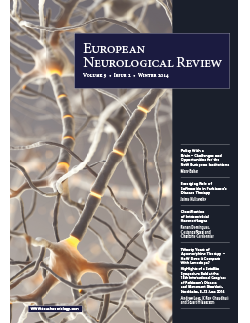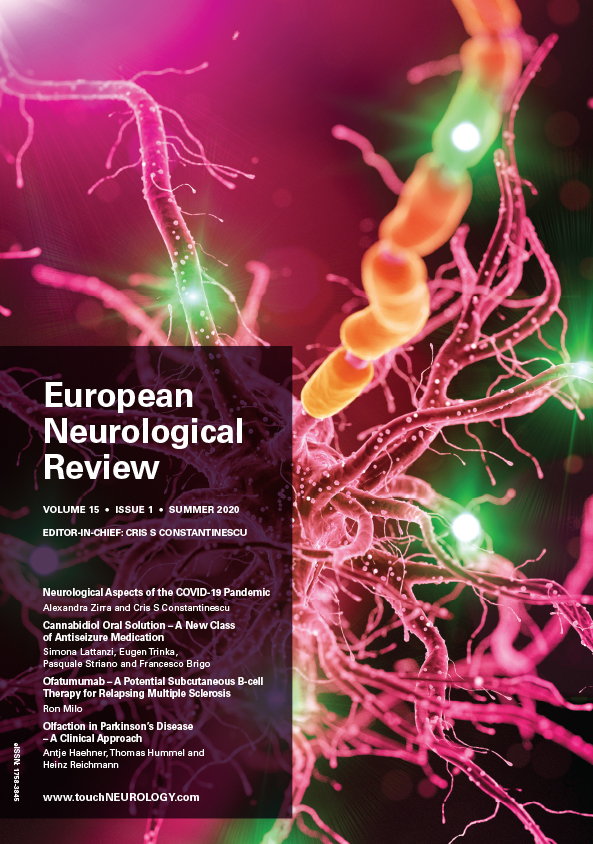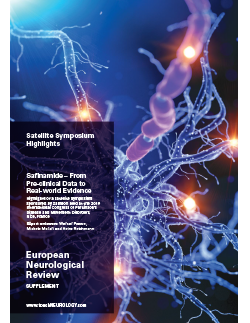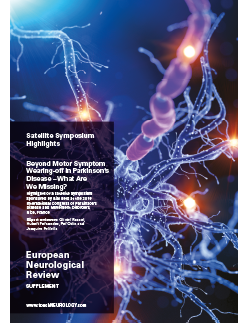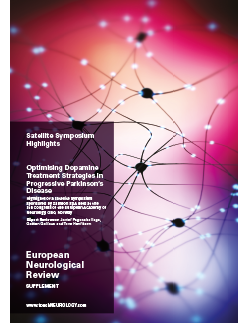EUROPEAN NEUROLOGICAL REVIEW – VOLUME 9 ISSUE 2 – WINTER 2014
Welcome to the winter edition of European Neurological Review. This edition features timely and concise review articles, written by esteemed experts, examining a wide range of important topics.
This edition begins with an interesting report from Mary Baker entitled ‘A Year of the Brain’. This article focuses on the economic burden of disorders of the brain, which is increasing with ageing populations around the world. The articles that follow address a variety of important topics, including Parkinson ’s disease, stroke prevention and multiple sclerosis. We also welcome an editorial by Giuliano Avanzini, which discusses whether seizures promote epileptogenesis and cause cognitive decline, and fellow Editorial Board member Jürg Kesselring with a short overview of the concept of neuroplasticity.
Please peruse and enjoy the expert content and we welcome your feedback.
Welcome to the winter edition of European Neurological Review, which features a diverse range of articles covering a number of therapeutic areas. This edition begins with a special report entitled ‘A Year of the Brain’. This article focuses on the economic burden of disorders of the brain, which is increasing with ageing populations around the […]
Special Report
As the 751 new European MEPs begin their term, the European Brain Council (EBC) is launching its Year of the Brain, calling for new thinking from policy-makers to take stock of the impact of austerity on health and wellbeing in Europe. The EBC works in partnership with patients, scientists, healthcare professionals, industry and policy-makers to […]
Movement Disorders
Parkinson’s disease (PD) is a neurodegenerative disorder characterised by the loss of dopaminergic neurons in the substantia nigra pars compacta – non-dopaminergic neurotransmission is also involved. In the basal ganglia circuitry there are many non-dopaminergic neurotransmitters and neuromodulators involved in the control of motor symptoms and implicated in the development of motor complications following long-term […]
Introduction to Apomorphine and its Role in the Treatment of Parkinson’s Disease Andrew Lees Professor of Neurology, National Hospital for Neurology and Neurosurgery, London. Apomorphine is a highly-potent dopamine agonist (DA) that, unlike other clinically available compounds in this class, selectively acts on both D1 and D2 dopamine receptors and has been shown in a […]
Epilepsy
William Gower’s statement that seizures beget seizures1 is often quoted as a first recognition of seizure-dependent progressive character of epilepsies. It is worth saying that this assumption has by no means a general value as it does not apply to many types of epilepsies, namely to the idiopathic ones. A progressive course towards drug refractoriness […]
Stroke
Atrial fibrillation (AF), the most common type of cardiac arrhythmia, substantially increases the risk and severity of stroke and has a highly negative effect on patient outcomes. AF is associated with a pro-thrombotic state and studies have shown it increases the risk of stroke fivefold.1,2 This increased risk is particularly great in the elderly aged […]
Spontaneous intracerebral haemorrhage (ICH) is defined as a focal collection of blood within the brain parenchyma or ventricular system that is not caused by trauma.1 It is a heterogeneous condition resulting from several distinct underlying vasculopathies. Several interacting and overlapping risk factors may play a role in the vessel rupture. The overall incidence of ICH […]
Multiple Sclerosis
Report of a Satellite Symposium Held at the Joint Congress of European Neurology, Istanbul, Turkey, 1 June 2014 Relevance of Systematic Real-world Data Collection for Physicians and Patient Physicians routinely collect data from multiple sclerosis (MS) patients as part of clinical practice. Much of these data are now in electronic formats. Minimum datasets for monitoring […]
Neuroplasticity
Until recently, neuroscientists assumed that the brain was fixed in terms of function and structure. Nowadays, data supporting the notion of neuroplasticity1 have grown to such an extent that former assumptions must be replaced. Brain plasticity,2,3 the possibility of adapting brain functions and, indeed, of also modifying its structures to requirements from the internal and […]
US Neurology 2014 Highlights
Employing neuromodulation strategies to treat chronic pain has gained momentum in recent years, along with an expansion of the indications. These therapies are safe, reversible, and efficacious, improving both validated pain and functional measures. However, the trial procedure is not without risk and deserves a respectful assessment of the risks and the benefits associated with […]
Migraine is a primary headache (HA) disorder affecting about 18 % of women and 6 % of men in the US and Western Europe.1,2 Migraine is essentially a disabling headache, characterized by moderate to severe head pain, usually accompanied by nausea, photophobia, and phonophobia that may be preceded by focal neurologic symptoms, which are called […]
A growing body of evidence demonstrates the importance of walking limitations in multiple sclerosis (MS). At the same time, there is increasing pressure on health care providers to monitor the outcomes of their interventions. Owing to its impact on our patients’ functional status, quality of life, and health, walking appears as an essential parameter to […]

Trending Topic
Amyotrophic lateral sclerosis (ALS) is characterized by the degeneration of both upper and lower motor neurons, which ultimately leads to muscle weakness, atrophy, spasticity and contractures.1 ALS typically manifests in the 50–60 years age range, although familial cases may present in late adolescence or early adulthood.2 The time from the first symptom to diagnosis is approximately 10–16 […]
Journal Archive
European Neurological Review is a peer-reviewed, free-to-access, bi-annual neurology journal comprising review articles, case reports, practice guides, theoretical discussions, and original research. It features balanced and comprehensive articles written by leading authorities, addressing the most important and salient developments in the field of neurology in practical terms.
Latest articles videos and clinical updates - straight to your inbox
Log into your Touch Account
Earn and track your CME credits on the go, save articles for later, and follow the latest congress coverage.
Register now for FREE Access
Register for free to hear about the latest expert-led education, peer-reviewed articles, conference highlights, and innovative CME activities.
Sign up with an Email
Or use a Social Account.
This Functionality is for
Members Only
Explore the latest in medical education and stay current in your field. Create a free account to track your learning.


